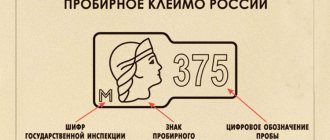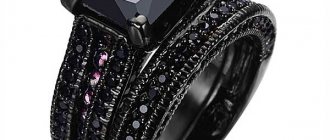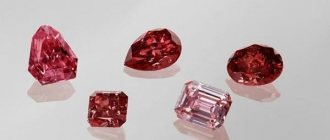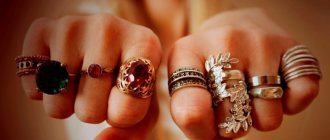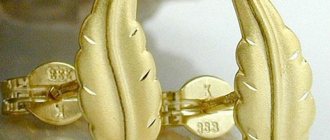WEAVING
- Any chain consists of symmetrical links connected in a certain way. The classics of the genre are anchor (oval-shaped links) and armor (polished flat links) weaving. There are mixed weavings, for example, fancy ones, as well as chains of pearls (balls).
- Previously, it was believed that fancy weaves were more suitable for one-time appearances, since they did not stand up to comparison with traditional ones in terms of wear resistance and practicality. New weaving technologies allow you to choose a chain without sacrificing comfort or aesthetics.
- And yet, anchor and armor chains are considered universal classics. Their links are fastened in such a way as to provide the chain with a smooth bend, which avoids creases and unevenness even with a massive “load”.
- It is important that the chain looks like a single line, gently enveloping the “landscape” of the neckline. Clear symmetry should be visible both in the size of the links and in their location.
- A simple test at a jewelry store: wrap a chain of anchor or shell weave around your finger. The “correct” sample does not break and bends around the finger gently, like a thread.
- Some types of links can cause discomfort when they come into contact with tiny hairs on the skin, pinching them and causing an unpleasant “tingling” sensation. Be sure to try on the chain before making a purchase.
CLASP
- The lock of the jewelry should be strong and reliable: open and close it several times during the acquaintance stage in the jewelry salon. If you have to use force to close it tightly, the lock is flimsy or very thin, it may hold the ends of the chain together, but it will no longer withstand the load of the weight of the pendant.
- Inspect the joints of the lock elements: nicks and chips should raise suspicion. The color of the lock should perfectly match the entire chain.
- If the chain has hinged elements, they should all rotate freely.
Chain: a worthy accompaniment of the cross. Part I
Chain: a worthy accompaniment of the cross. Part I
For many centuries, people have been using chains both for economic purposes and as decoration. A special role is given to those made of precious metals. In Russia, chains made of gold and silver are most widespread. Many Orthodox believers use them to wear crosses and icons, expecting that such a chain will serve its owner for many years and protect a personal shrine from unfortunate loss. There are numerous cases where a chain, having served its owner for many decades, together with the image worn on it, was passed on to his descendants as a blessing, and, in fact, became a family heirloom. Of course, only a chain that is made in compliance with production technology and from a high-quality alloy can go this way.
All that glitters is not gold
Unfortunately, according to experts, today about 50% of jewelry supplied to Russia is contraband. There are known cases when counterfeit marks are placed on chains, bypassing the State Assay Supervision Inspectorate, which, by the way, guarantees the content of precious metal in the alloy. When selling such a chain, both the buyer and the seller are at risk. It is appropriate to recall the popular wisdom: not all that glitters is gold! It turns out that every second chain sold in Russia may be of low quality. You won’t have to wear such a chain for a long time, and the safety of the cross suspended on it is very doubtful... How can you choose a chain of guaranteed high quality and at an affordable price?
In issue 21, our magazine already wrote about the largest jewelry chain knitting building that opened in the summer of 2009 in the city of Kolchugino (Vladimir region). The plant employs about 240 employees, and the total number of company personnel tends to 500. Among the honored guests who visited the newest production building is the Governor of the Vladimir Region N.V. Vinogradov, head of the Kolchuginsky district V.A. Katyshev, Chairman of the Council of the Guild of Russian Jewelers A.G. Ivanyuk and many other respected leaders of large trading and manufacturing companies in the jewelry industry.
Experience working with dioceses and churches
Over the years, we have developed warm and reliable relationships with Orthodox dioceses, churches and monasteries, who have been convinced of the quality of products and the ease of working with the company through the experience of long-term cooperation. Among them: Nizhny Novgorod, Kazan, Petropavlovsk, Yuzhno-Sakhalinsk, St. Petersburg, Novosibirsk, Saratov dioceses of the Russian Orthodox Church, Holy Trinity Sergius Lavra, St. Danilov Stavropegial Monastery, Holy Trinity Seraphim-Diveevo Convent, Cathedral of Christ the Savior and many other.
Among Orthodox and secular buyers, 925 sterling silver chains are especially in demand. How do chains produced by ADAMANT differ from externally similar products from other suppliers? First of all, manufacturing technology. At the jewelry store, silver chains are made from high-quality 925-carat alloy, the compliance of which is confirmed by the hallmark of the State Assay Supervision Inspectorate, which is placed on each chain.
How to choose a chain for a cross
How to choose the right chain so that it does not break under the weight of the icons worn on it, does not break when constantly worn under clothes, and does not cut into the body? Experts offer simple advice. When choosing a chain for wearing a cross or icon, it is recommended to use soft types of weaving that are durable and do not break. These include double diamond, lava, nonna, singapore, anchor, armored and hand-made bismarck.
When selecting a chain, in order to avoid stretching and deformation of the links, usually choose a chain 1.5–2 times heavier than the pendant. According to statistics, the most popular lengths for wearing religious pendants are 55, 60 and 65 cm. The cross on such a chain will not constantly be knocked out from under the clothes and, at the same time, will be located exactly on the chest, as recommended by tradition. White chains go especially harmoniously with crosses and icons made of white silver, and blackened chains with blackened ones.
Based on the processing method (and, accordingly, appearance), the following types of silver chains are distinguished: white, blackened, gold-plated chains.
White silver chains
In order to increase the service life of white chains, the jewelry manufacturer uses silver plating technology. This is the refining of a chain by applying a 999.9° silver coating with a thickness of 0.5 microns to its surface. Thanks to the use of snow-white silver of the highest standard, the optimal color of the jewelry chain is achieved and its corrosion resistance is increased. Advanced technologies make it possible to achieve a special metal structure: a hardness rating of 180 Vickers points. This is 2–2.5 times higher than regular silver chains! To improve the appearance of the product, shine-forming additives are used.
At the final stage of processing, the chain is varnished using a special cataphoresis technology, thanks to which it receives protection from environmental influences and retains its original appearance much longer than a regular chain and does not darken (for a year or more).
Blackened chains
Blackening is one of the types of decorative finishing of jewelry. It involves applying a special composition to the surface of the product, which, when interacting with silver, creates a beautiful blue-black color. Thanks to blackening, a strong color contrast is created, decorating the products, giving them brightness and special relief. It is especially noticeable in the combination of a blackened surface with a bright diamond facet of the chain. The love for blackened silver is especially characteristic of the Russian buyer.
Gold plated chains
To create a multi-layer sparkling gold coating on silver products, ADAMANT often uses Italian application technology - electroplating. Previously, two sublayers of coating are applied to the chain: first, silver, 3 microns thick, to increase the corrosion resistance of silver and reduce the diffusion of gold in silver. Then - gold (999.9°) 0.5 microns thick. Thanks to the use of modern technologies, a high effect of hardness and wear resistance of the coating is achieved. The last, top layer is shiny pink or, as it is also called, 585 red gold, so beloved in Russia, up to 0.1 microns thick. Thanks to this coating, a gilded silver chain is almost impossible to distinguish from a gold chain in appearance. This amazing property allows it to go well with gold jewelry.
“Church Jeweler” No. 23, 2010
Adamant Trading House
How to choose the length of a chain for a man’s neck?
Men's neck jewelry received a slightly different gradation of sizes. They are slightly larger, but the weaving styles significantly limit the possible wearing options:
| Cm | Inches | Who it suits/what it looks like |
| 45 | 18 | Young people of short stature and thin build. As a rule, the length corresponds to the circumference of a classic neckline on a sports T-shirt. |
| 50 | 20 | The chain freely covers the base of the neck, without touching the collarbones. It is clearly visible with the top button undone if you are wearing a shirt without a tie. |
| 60 | 24 | Option for body crosses or pendants. Reaches a third of the chest with an even posture. |
| 70 | 28 | Similar to size 60, but for men with a height of 185 cm and above. |
| 75-80 | 30-32 | The so-called hip-hop style, when the end of the chain is below the middle of the chest. Such a specific decoration is worn only on top of clothing. |
Choosing a chain for a man can also be difficult because it is necessary to take into account the body composition and proportions of the figure. For example, a stocky build, even with an average height of up to 175 cm, requires longer jewelry than a short, slender guy.
How to choose a chain for a cross - tips and tricks
Although a pectoral cross is a piece of jewelry made of gold or silver alloy, it is primarily a symbol of faith.
And you need to wear it so that it is hidden from prying eyes. Therefore, in order to choose the ideal chain for a cross, you must first familiarize yourself with the tips and recommendations given by both experienced salespeople in jewelry stores and employees of church shops. And they recommend paying attention to such characteristics as: length, weaving, color and composition of the alloy, weight.


